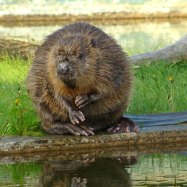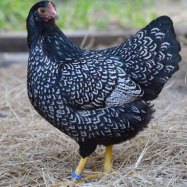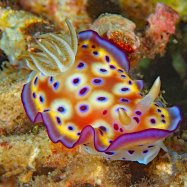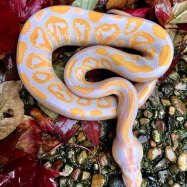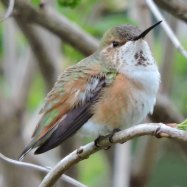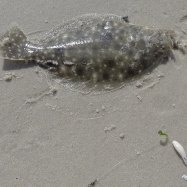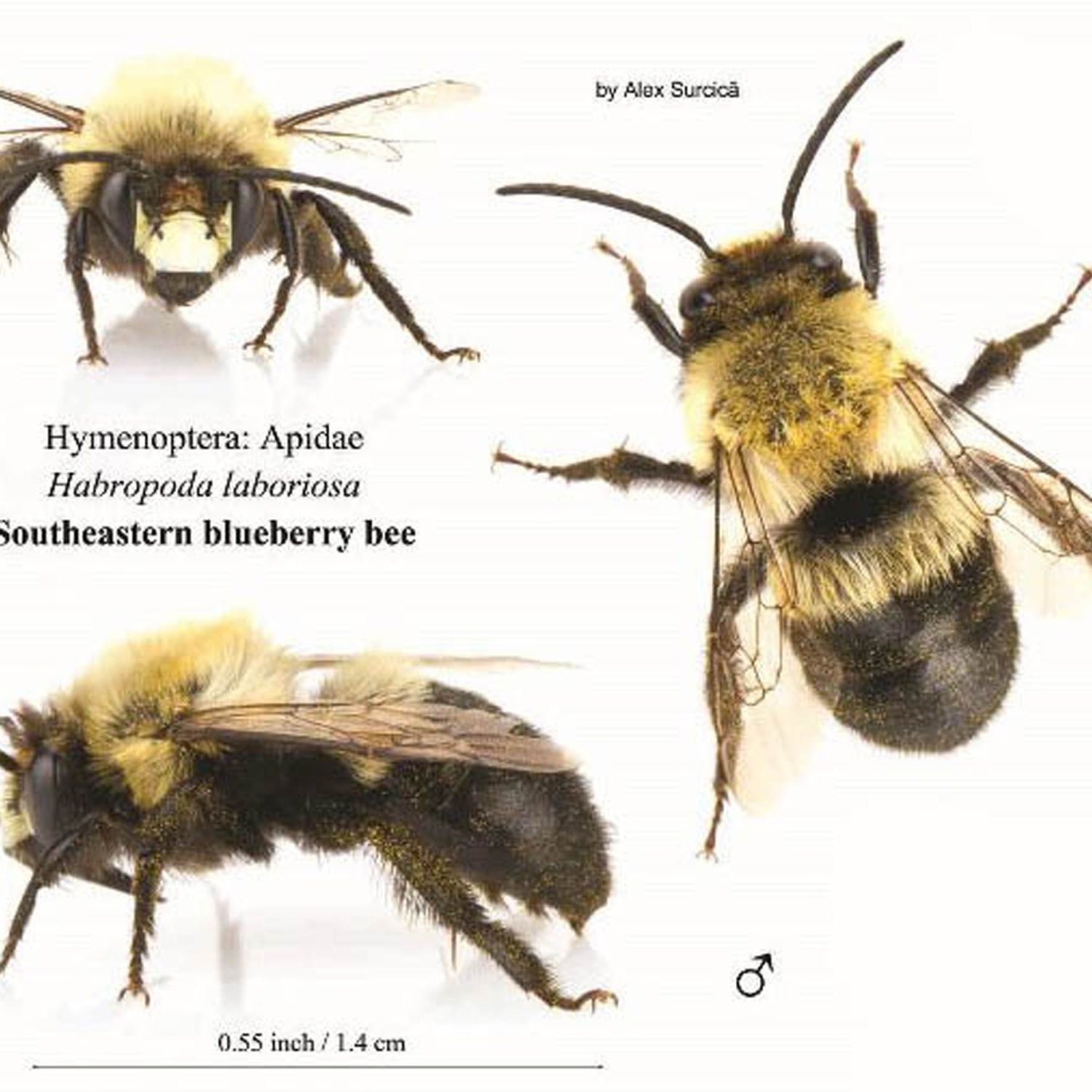
Southeastern Blueberry Bee
8 - 12 mm
. Southeastern Blueberry Bees are important pollinators for blueberry crops in the Southeastern United States. These medium-sized bees have a robust body, furry legs, and abdomen. They are usually 8-12 mm in length and can be found in Alabama, Florida, Georgia, Louisiana, Mississippi, South Carolina, and Texas. Their presence is crucial for the production of delicious blueberries.
Animal Details Summary:
Common Name: Southeastern Blueberry Bee
Kingdom: Animalia
Habitat: Forest edges, open woods, and clearings with blueberry plants
The Fascinating Habropoda Laboriosa: Exploring the Southeastern Blueberry Bee's Role in Nature
Nature never ceases to amaze us with its diverse and intricate ecosystem. We often hear of the vital role that bees play in our environment, but did you know that there is a specific species of bee that is solely responsible for pollinating blueberry plants in the Southeastern United States? Yes, you read that right. Let’s dive into the world of Habropoda laboriosa more commonly known as the Southeastern Blueberry Bee.The Classification and Distribution of the Southeastern Blueberry Bee
The Southeastern Blueberry Bee belongs to the Kingdom Animalia, Phylum Arthropoda, Class Insecta, and Order Hymenoptera Southeastern Blueberry Bee. This fascinating bee is a member of the family Apidae, which also includes other well-known species like honeybees and bumblebees. Its scientific name, Habropoda laboriosa, derives from the Greek words "hábro", meaning delicate, and "póda", meaning feet, indicating its furry legs and "laboriosus", meaning industrious, highlighting its hardworking nature.This bee is native to the United States, specifically the southeastern region, where it thrives in forest edges, open woods, and clearings with blueberry plants. States like Alabama, Florida, Georgia, Louisiana, Mississippi, South Carolina, and Texas are lucky enough to be home to these incredible creatures. They play a crucial role in the ecosystem by pollinating blueberry plants, which is why they are often referred to as blueberry pollinators.
The Physical Characteristics of the Southeastern Blueberry Bee
The Southeastern Blueberry Bee is a medium-sized insect with a robust body and a length ranging from 8 to 12 mm. They have a distinct black color with a metallic blue or purple sheen, making them stand out in the sea of other bee species. Their body shape is quite distinctive, with a larger abdomen compared to their head and thorax.One of the most notable features of this bee is their furry legs and abdomen, which aids in collecting pollen Siberian Ibex. They also have wings that are longer than the typical bee species, allowing them to fly faster and cover more distance while pollinating.
The Feeding and Foraging Habits of the Southeastern Blueberry Bee
As the name suggests, the Southeastern Blueberry Bee primarily feeds on nectar and pollen from blueberry plants. This makes them essential pollinators for blueberry crops, which are a significant contributor to the economy in the southeastern region of the United States.These bees have a unique foraging habit that sets them apart from other bee species. They are solitary bees, which means that they do not live in colonies like honeybees. However, they do build individual nests within close proximity to each other, forming a loose community.
Each female bee constructs their nests in the ground, using their strong mandibles to dig small tunnels. They then line these tunnels with plant material to create individual chambers for their eggs. The female bees collect pollen and nectar to feed their young, and as they fly from flower to flower, they transfer pollen, thus pollinating the blueberry plants.
The Importance of Southeastern Blueberry Bees in Nature
As mentioned earlier, the Southeastern Blueberry Bees are crucial pollinators, specifically for blueberry plants. The blueberry industry in the Southeastern United States greatly relies on these bees to produce abundant, high-quality crops. These bees are also essential for maintaining a diverse ecosystem, as they pollinate other wild plants and contribute to the overall health and productivity of their natural habitat.Additionally, the Southeastern Blueberry Bee plays a significant role in the food chain. They serve as a food source for other animals, including birds and small mammals, making them an essential link in the web of life.
Conservation Efforts for the Southeastern Blueberry Bee
Unfortunately, like many other bee species, the Southeastern Blueberry Bee is facing threats due to human activities. Habitat loss, pesticides, and climate change are among the top contributors to their decline. As solitary bees, they are more vulnerable to habitat loss, as they require specific plants and nesting areas to survive.Fortunately, there are efforts in place to protect and conserve these bees. Organizations like the Xerces Society and the USDA Natural Resources Conservation Service have programs in place to educate farmers and the public about the importance of these bees and how to protect and preserve their habitat. Farmers are encouraged to use bee-friendly farming practices and create pollinator-friendly areas to support the nesting and foraging needs of these bees.
The Future of the Southeastern Blueberry Bee
With the conservation efforts in place, there is hope that the Southeastern Blueberry Bee population will thrive in the future. However, there is still much work to be done to ensure their survival and protection. As individuals, we can also play a part in helping these bees by supporting local farmers who use bee-friendly practices, creating pollinator-friendly gardens, and educating ourselves and others about the importance of these incredible pollinators.In conclusion, the Southeastern Blueberry Bee may be small in size, but its impact on our environment is significant. They may not be as well-known as honeybees, but their role in pollinating blueberry plants and maintaining a diverse ecosystem cannot be overlooked. By learning more about these fascinating creatures and taking steps to protect them, we can ensure that they continue to thrive and contribute to the balance of nature for generations to come.

Southeastern Blueberry Bee
Animal Details Southeastern Blueberry Bee - Scientific Name: Habropoda laboriosa
- Category: Animals S
- Scientific Name: Habropoda laboriosa
- Common Name: Southeastern Blueberry Bee
- Kingdom: Animalia
- Phylum: Arthropoda
- Class: Insecta
- Order: Hymenoptera
- Family: Apidae
- Habitat: Forest edges, open woods, and clearings with blueberry plants
- Feeding Method: Nectar and pollen from blueberry plants
- Geographical Distribution: Southeastern United States
- Country of Origin: United States
- Location: Alabama, Florida, Georgia, Louisiana, Mississippi, South Carolina, and Texas
- Animal Coloration: Black with metallic blue or purple sheen
- Body Shape: Medium-sized robust body, furry legs and abdomen
- Length: 8 - 12 mm
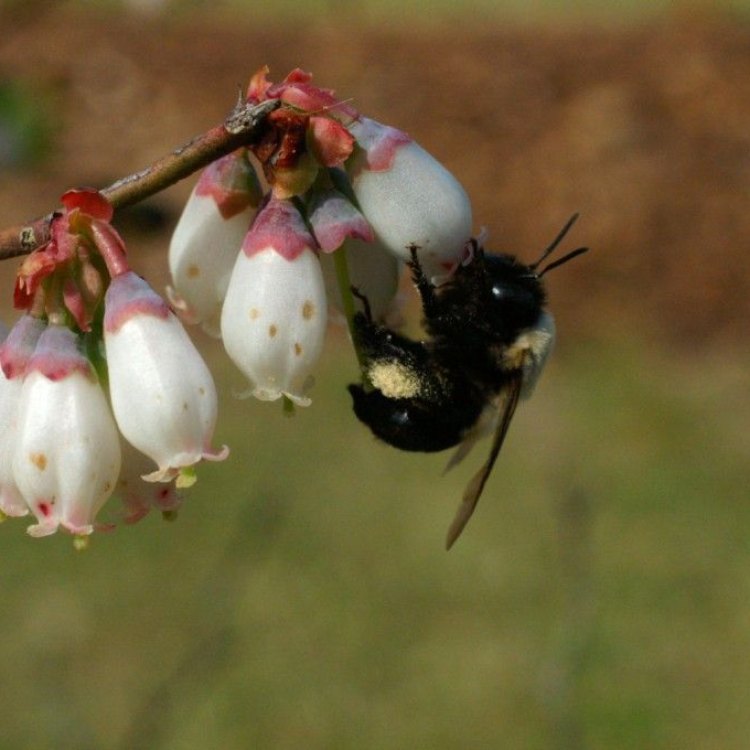
Southeastern Blueberry Bee
- Adult Size: Similar to honey bees
- Average Lifespan: Approximately 1 year
- Reproduction: Sexual
- Reproductive Behavior: Males wait on flowers to mate with newly emerged females
- Sound or Call: No specific sound or call
- Migration Pattern: Non-migratory
- Social Groups: Solitary, but may be found in aggregations
- Behavior: Active during the day, forages for nectar and pollen
- Threats: Habitat loss, pesticide use, climate change
- Conservation Status: Not evaluated (IUCN Red List)
- Impact on Ecosystem: Important pollinators of blueberry plants
- Human Use: Not used by humans
- Distinctive Features: Metallic blue or purple sheen on black body
- Interesting Facts: Only species of blueberry bee native to the Southeastern United States
- Predator: Birds, spiders, and other insect predators
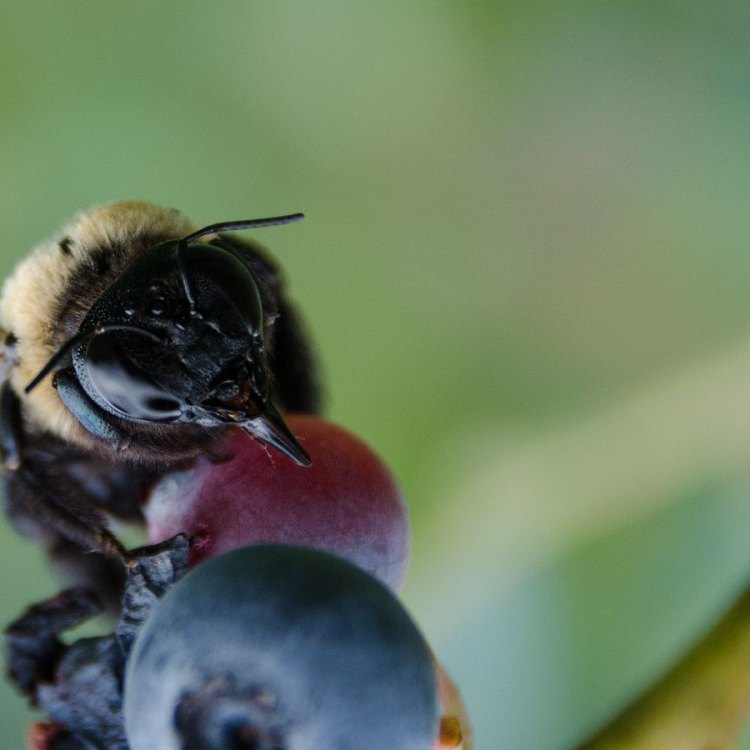
Habropoda laboriosa
The Fascinating World of Southeastern Blueberry Bees
Nestled among the rolling hills and lush forests of the Southeastern United States, a tiny yet mighty insect buzzes in the air, hard at work collecting nectar and pollen. Meet the Southeastern Blueberry Bee, a species of solitary bee that plays a crucial role in the ecosystem.Described as similar in size to honey bees, these industrious creatures may seem unremarkable at first glance. However, a closer look reveals their striking metallic blue or purple sheen on a black body, making them stand out from other bee species PeaceOfAnimals.Com. And that's not the only unique aspect of the Southeastern Blueberry Bee – from its behavior to its impact on the environment, there is much to learn and appreciate about this little-known pollinator.
The Basics: Size, Lifespan, and Reproduction
Similar to honey bees, Southeastern Blueberry Bees have an average adult size and a lifespan of approximately one year. However, unlike honey bees, these bees are solitary, meaning they do not live in hives or colonies. Instead, they build their nests individually, using materials such as mud or plant resins.These bees reproduce sexually, with males waiting on flowers to mate with newly emerged females. Interestingly, it is not uncommon to find multiple males waiting on the same flower, creating a competitive atmosphere to win the attention of the female.
Foraging Behavior and Threats
Southeastern Blueberry Bees are active during the day, foraging for nectar and pollen to sustain themselves and their offspring. They have a specialized relationship with blueberry plants, making them important pollinators for this species of plant. As they brush against the blueberry flowers, collecting nectar and pollen, they inadvertently transfer pollen from one flower to another, allowing the blueberry plant to produce its sweet and delicious fruit Spadefoot Toad.Unfortunately, these hard-working bees face numerous threats in their habitat. Habitat loss due to urbanization and agricultural development is a significant cause of concern. As their natural habitat is diminished, they have fewer places to build their nests and forage for food. Pesticide use is another grave threat to these bees, as the chemicals used can be harmful to their health and reproduction.
Climate change also poses a significant threat to Southeastern Blueberry Bees. With rising temperatures and changing weather patterns, the timing of the blueberry plants' bloom may no longer coincide with the bees' emergence and mating periods. This mismatch can have a detrimental impact on their population, as they may not have sufficient food sources to sustain themselves and reproduce.
These threats have led to a decline in the population of Southeastern Blueberry Bees, highlighting the need for conservation efforts to protect these vital pollinators and their habitat.
The Impact on Ecosystem and Human Use
As mentioned earlier, Southeastern Blueberry Bees are crucial pollinators for blueberry plants. Without their pollination services, these plants would not be able to produce their delicious and nutritious fruits that are enjoyed by humans and wildlife alike.In addition to pollinating blueberry plants, these bees also play a vital role in maintaining the diversity and balance of the ecosystem. As they forage for nectar and pollen, they also inadvertently pollinate other plant species, ensuring the survival of a variety of flora.
Despite their importance in the ecosystem, Southeastern Blueberry Bees are not used by humans in any significant way. Unlike honey bees, they do not produce honey or beeswax, and their solitary nature makes it challenging to domesticate them for agricultural purposes.
Distinctive Features and Interesting Facts
One of the most striking features of Southeastern Blueberry Bees is their metallic blue or purple sheen on their black bodies, which gives them a unique appearance. This feature has made them a subject of fascination for many bee enthusiasts and hobbyists, making them a popular species to study and observe.Moreover, these bees are the only species of blueberry bee native to the Southeastern United States, making them an essential part of the region's biodiversity. As a native species, they have adapted to the climate, environment, and plants of the Southeast, making them essential for its ecological balance.
Predators and Conservation Status
Like any other insect, Southeastern Blueberry Bees also have predators that pose a threat to their survival. Birds, spiders, and other insect predators, such as wasps, can prey on these bees. However, their shiny coloration and quick flight make it challenging for predators to catch them, providing them with some protection against these threats.Surprisingly, the International Union for Conservation of Nature (IUCN) has not yet evaluated the conservation status of Southeastern Blueberry Bees. This means that their population and decline have not been formally assessed, highlighting the need for more research and attention on this species.
Protecting Southeastern Blueberry Bees and Their Habitat
As we continue to face the global decline of pollinators, it is crucial to pay attention to lesser-known species like Southeastern Blueberry Bees. These bees may not be as well-known or widely used by humans, but they play a vital role in maintaining the balance and diversity of our ecosystem.To protect Southeastern Blueberry Bees and their habitat, we must take action on multiple fronts. This includes preserving and restoring their natural habitat, supporting sustainable farming practices that minimize the use of pesticides, and raising awareness about the importance of these bees and other pollinators.
We can also create bee-friendly spaces in our gardens and communities by planting native plants and avoiding the use of harmful chemicals. By working together to protect these essential pollinators, we can ensure a healthier and more sustainable ecosystem for both humans and wildlife.
In conclusion, the Southeastern Blueberry Bee may be a small and solitary creature, but it has a significant impact on the environment and our lives. With its distinct features, interesting behavior, and crucial role as a pollinator, this bee deserves our attention and protection. Let us appreciate the wonders of nature and do our part in preserving it for future generations to come.
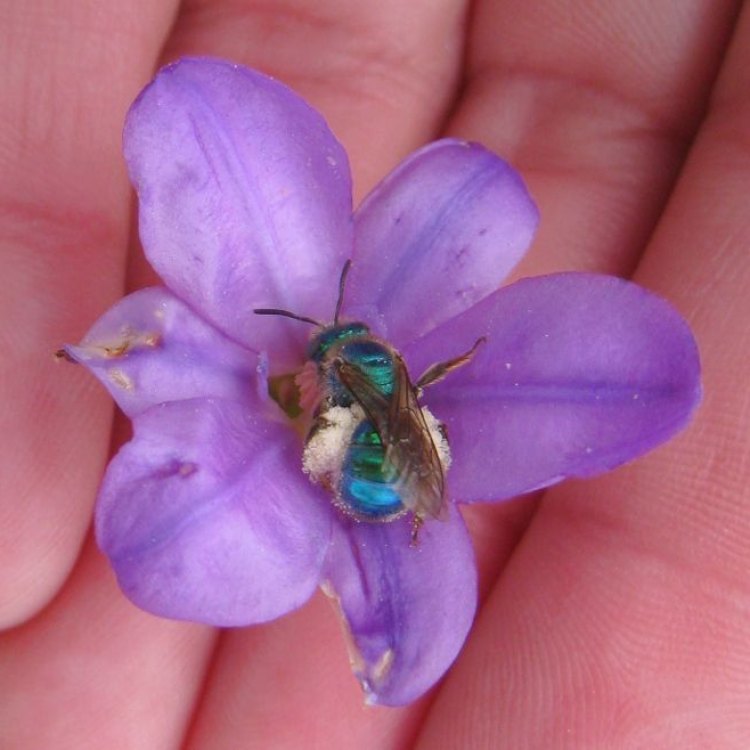
The Fascinating Habropoda Laboriosa: Exploring the Southeastern Blueberry Bee's Role in Nature
Disclaimer: The content provided is for informational purposes only. We cannot guarantee the accuracy of the information on this page 100%. All information provided here may change without prior notice.

